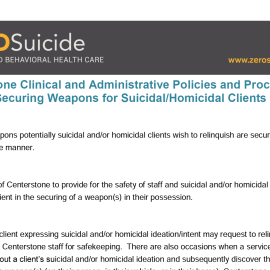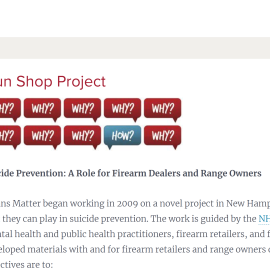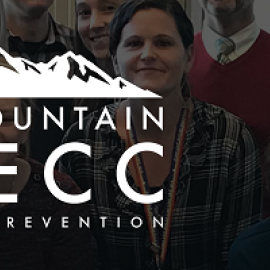Lethal Means Safety
Access to Lethal Means
Reducing access to lethal means, such as firearms and medication, is a critical component of suicide prevention. Studies from around the world have demonstrated that the overall rate of suicide drops when access to commonly used, highly lethal suicide methods is reduced.1, 2, 3
In the late 1950s, the United Kingdom switched from coal gas to natural gas, which is free from carbon monoxide. Suicide deaths decreased, saving thousands of lives over the next 10 years.1 A study in Australia found a decrease in suicide by firearms and in the overall national suicide rate following a 1998 ban on private gun ownership.3 While these studies demonstrate the importance of advocating for means restriction on a larger, policy-based scale, they also translate into the individual level—removing access to lethal means can save lives.
Research has shown that among people who made near-lethal suicide attempts, 24% reported taking less than five minutes between the decision to kill themselves and the actual attempt; 70% took less than an hour.4 Based on this evidence, it is clearly possible to increase the chance of surviving an attempt if an individual at risk for suicide has reduced access to lethal means in their moment of crisis.
CALM Training
This can be one of the most challenging tasks a clinician faces in suicide care. The Counseling on Access to Lethal Means (CALM) online training is offered free of charge through the Zero Suicide website as one tool to address providers’ preparedness in handling this difficult area of care.
Research shows that mental health providers demonstrated an increase in knowledge and skills regarding lethal means reduction counseling and sustained change in beliefs and attitudes about the importance of lethal means restriction following a CALM training. Ensuring that all providers are trained in not only how to assess for the availability of means but also methods of means restriction and empathic counseling to do saves lives.
Organization policies should clearly state what clinicians should do regarding lethal means, including the protocol to follow in the event an individual brings a weapon or other lethal means to the clinical setting. Clear policies should be in place for how to document these assessments and actions within the electronic health record (EHR). Centerstone’s Securing Weapons for Suicidal/Homicidal Clients (in the resources section below) serves as a strong example. This protocol outlines the steps for clinical and non-clinical staff to take when an individual brings a lethal instrument to a session.
Questions to consider:
- Are my staff trained in counseling on access to lethal means?
- Are there systems in place to review staff sense of preparedness and support in counseling on access to lethal means?
- What protocols exist for following-up with individuals with access to lethal means?
- What protocols exist for individuals who bring lethal means into our setting?
- What are the local laws on firearm storage?
Discussing lethal means safety should also occur when completing a collaborative safety plan. Please visit the next tab in the Engage section about safety plans for more information.
Suggested Resources
- 1a1bHarvard T.H. Chan School of Public Health. (2016). Means Matter. Retrieved from https://www.hsph.harvard.edu/means-matter/
- 2Hawton, K. (2002). United Kingdom legislation on pack sizes of analgesics: Background, rationale, and effects on suicide and deliberate selfharm. Suicide and Life-Threatening Behavior, 32(3), 223-229. Retrieved fromhttps://onlinelibrary.wiley.com/doi/full/10.1521/suli.32.3.223.22169
- 3a3bLarge, M.M., & Nielssen, O.B. (2010). Suicide in Australia: Meta-Analysis of Rates and Methods of Suicide between 1988 and 2007. Medical Journal of Australia, 192(8), 432-437.
- 4Mercy, J.A., Kresnow, M.J., O’Carroll, P.W., Lee, R.K., Powell, K.E., Potter, L.B., & Bayer, T.L. (2001). Is suicide contagious? A study of the relation between exposure to the suicidal behavior of others and nearly lethal suicide attempts. American Journal of Epidemiology, 154(2), 120-127.



